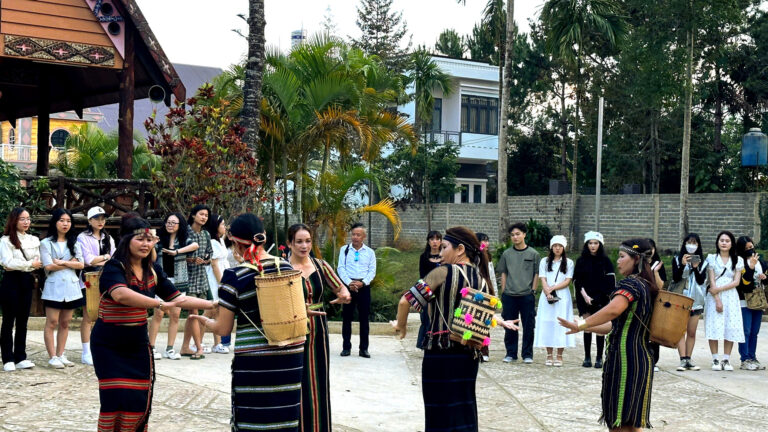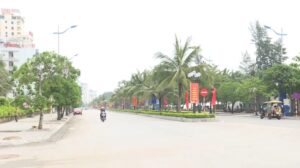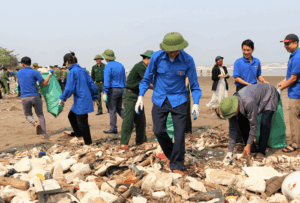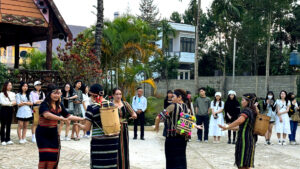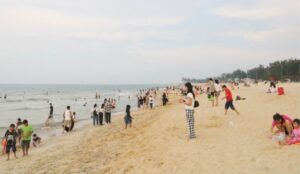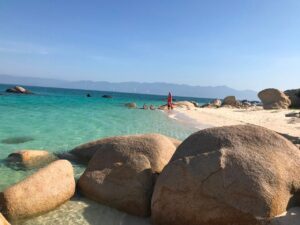(TITC) – Viet Nam is severely affected by climate change, many tourist destinations are at risk of disappearance due to flooding and extreme weather.
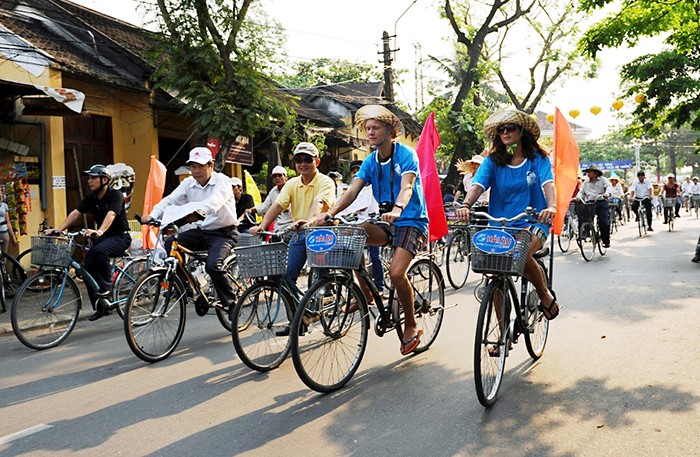
In the Asia-Pacific Parliamentary Forum (APPF-26) in early 2018, Deputy Prime Minister Vu Duc Dam affirmed: Climate change and sea level rise are no longer a potential risk but actually exist. Tourism is one of the most vulnerable sectors due to climate change because most of Viet Nam's tourism activities depend on the natural resources.
Impact of climate change on tourism
According to the Institute Research for Tourism Development, climate change has a direct impact on tourism infrastructure, travel activities and especially tourism resources, a fundamental element for tourism development.
Owning a coastline of more than 3,000 km, Viet Nam tourism has the strength of sea tourism and leisure tourism. It is estimated that if the sea level rises by one meter, 5.2% of the natural area and 10.8% of the population will be affected and many of Viet Nam's beautiful beaches will disappear.
In addition, prolonged floods and storms will damage many historical and cultural relics, especially culture tourism resources. Tourism service facilities are damaged or degraded under the impact of intense storms, conditions of temperature and humidity.
A typical example of the impact of climate change is the Khai Long Tourist Resort (Ca Mau Province) that has been closed after 5 years of operation because of erosion due to sea level rise. Ana Mandara Hue Beach Resort is strongly affected by sea level rise. Hoi An Ancient Town is facing the risk of landslide and flooding.
The Mekong Delta is one of the regions most affected by climate change. The situation of landslide and saline intrusion has become more complicated and widespread. In the past few years, the typical floating season of Western tourism is no longer cyclical.
Not only affecting to sea tourism, climate change also directly affects to mountain tourism. Many famous waterfalls of the Central Highlands region have been constantly drought, running out of water due to changes in weather.
The physical and intangible cultural heritage sites are also affected such as: the complex of Hue architectural relics, Hoi An Ancient Town, Hue garden house, the system of Cham temple and tower in Central of Viet Nam. These legacies received annual floods and storms. Many buildings are termite and moldy. Many researchers believe that the historical and cultural relics, especially the architectural monuments, archaeological relics will be degraded and damaged by the phenomenon of extreme weather.
In fact, tourism industry is the directly affected by climate change in many aspects, from natural resources, to cultural heritage, infrastructure and tourism environment.
Climate change is a global problem
Climate change is not a matter of Viet Nam, but of global problem. Many famous destinations and structures are in danger of disappearing due to sea level rise and global warming.
The US Aeronautics and Space Administration (NASA) said that the islands in the Pacific and Indian Oceans are most affected by climate change. Islands such as the Maldives or Tuvalu will be uninhabitable by 2050, Kiribati island is expected to completely disappear below sea level by 2100.
Research from the National Institute of Geography and Volcanic Science Italy predicts sea level here to rise by about 1.5 m by the end of the 21st century. With sea level rising rapidly, Venice will be flooded an average of 100 times every year and sinking completely in the next century.
The World Bank report also predicted that 40% of Bangkok could be flooded in the next 12 years due to rising sea levels and erratic rainfall.
Under the impact of weather and people, China's Great Wall is also disappearing. Currently less than 10% of wall are considered intact, while 30% have disappeared. Many parts of the wall are eroded by the weather. Plants that grow roots on the walls also cause many sections to fall into ruins.
In order to avoid the worst tragedies that could happen to this ancient world wonder, the Chinese government introduced laws that forbid people to pry bricks on walls for use or sale. They also encouraged localities to bring the wall into tourism, which in turn allowed them to protect this heritage against the destruction of nature.
In Italy, to avoid Venice being destroyed, the government has spent $ 8 billion to build breakwaters. These flexible floating dikes are only used for a few hours when the sea level rises so the water flow normally between the lagoon and the Adriatic Sea and the ecosystem here is almost unaffected.
The Netherlands, where 27% of the area is below sea level, is adapting to climate change with "Room for the river" projects. The solutions of this project include: dredging riverbeds, river banks, moving dykes away from the river banks, opening a parallel river channel, removing water obstacles, increasing or decreasing the height of dykes and reinforcement dyke, pump station ... This model has been highly appreciated by British, US, Singapore....
In Tokyo, three Tone, Are and Edo rivers are always as the terror of the Japanese whenever the rainy season comes. This area is the famous floodplain of Japan due to snow melt and heavy rain coming from many places. Since 1993, the Japanese Government decided to build an underground urban drainage canal. The project took 13 years to complete with a budget of 3 billion USD.
This work not only solves the flooding situation of Tokyo but also is known to tourists all over the world as the "Pantheon underground". In addition to the flood control period, some sections of this drainage system become a tourist attraction.
Thus, the common denominator of major countries in the world is adapting and living with climate change. Viet Nam is no exception.
Vietnam tourism ahead of the wave of climate change
Addressing at the "High Level Dialogue on Climate Change" earlier in October 2018. Deputy Minister of Natural Resources and Environment Le Cong Thanh said: Viet Nam always takes the initiative and actively implements international commitments and efforts to cope with climate change.
Along with approving the Paris Agreement on climate change, Viet Nam has issued many plans and policies so that each local provinces can be proactive in adapting to climate change.
Typically, the project of building protection embankment in Hoi An Ancient Town (Quang Nam Province). The project is in the list of priority projects under the program to support climate change response approved by the Prime Minister. In addition to protecting the old town from the risk of landslide, the project also combined dredging the riverbed, creating a landscape of eco-friendly environment for Hoi An Ancient Town.
In order to protect the monument, Thua Thien Hue Province also invested over VND 2.6 billion to install lightning protection system at Minh Mang Tomb, Tu Duc Tomb, Dong Khanh Tomb, Thieu Tri Tomb, Dien Tho Palace (Hue Citadel) and Secret Mechanics (Tam Toa, Hue Citadel).
In the Western provinces, there are climate change tours. Visitors will be taken to places that have been affected by climate change such as: landslides, loss of protection forests in Thanh Phu District; saline intrusion, lack of drinking water in Lach Market, Ba Tri and Binh Dai districts ...
At the end of March, Can Tho City People's Committee also signed with Novaland Group, BCG Consulting Group (The Boston Consulting Group) and a number of units to cooperate in strategic consulting, and deploy the project "Tourism development in the Mekong Delta is adapting to climate change ".
"This master tourism development plan ensures that investments will be used for the purpose of promoting regional economic development and supporting local people for a long time," said Bui Thanh Nhon, Chairman of Novaland Group said.
Initial estimates from BCG show that it is possible to create 300,000 more jobs in the tourism industry by 2025. The project will use the best global standards and practices to ensure sustainability, thereby preserving and nurturing key cultural resources in the Mekong Delta such as floating markets, river communities and local living culture.
Large cities like Hanoi and Ho Chi Minh City, the construction of water supply and drainage systems, calling on people to join hands in environmental protection, proactive adaptation and response to climate change are considered priority.
On a national scale, "Proactively responding to climate change" becomes one of the important projects in the socio-economic development strategy to 2020, vision to 2030.
|
The environment and destination quality management are the contents to be discussed at the Viet Nam Tourism High Forum, under the Viet Nam Economic Forum 2018. The event is scheduled to take place in early December in Hanoi. The forum is the first national meeting, dialogue and conference event of the tourism industry; is an opportunity for businesses and domestic and foreign investors to comprehensively grasp the national mechanisms, strategies, potentials as well as outstanding issues and challenges for the development of Viet Nam tourism. The program is organized by the Department of Private Economic Development (Department IV) and VnExpress and the TAB Tourism Advisory Council. |
Hong Thanh



